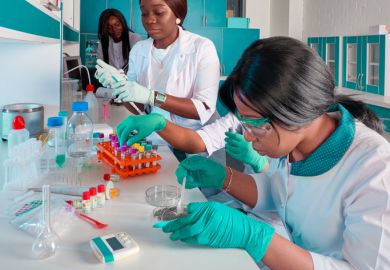After years of complaining about the low quality of US public schools and its effect on higher education, a growing number of US universities are taking steps to do something about it.
Such efforts range from a small-town bid by Colby College to help its local public school reimagine itself, to major statewide and nationwide initiatives by Arizona State University to use its hundreds of teaching-school graduates to push structural changes in dozens of states.
The seriousness of the problem demands going beyond making more changes in curriculum and teacher training, said Carole Basile, dean of the Teachers College at ASU. “It has to be a fundamental structural change in the way that this works, for both teachers and kids,” she said.
David Greene, the president of Colby, in rural Waterville, Maine, said he is hoping to stimulate change for his economically struggling area “in a way that becomes a model for these other small cities that are taking the exact same thing that we’re facing”.
While US universities are acknowledged world leaders, US public grade schools are globally mediocre, ranking behind those of many developed nations.
“The US is a story of two education systems,” said Michael Green, chief executive officer of the Social Progress Imperative, which assesses global societal and environmental performance.
The divide has a heavy economic and racial component tied to local wealth, as US grade schools are largely funded by local taxes. Many elite US colleges then admit relatively few students from poorer US families and cite inadequate student preparation as a chief reason.
“There’s only so much colleges and universities can do,” said Terry Hartle, senior vice-president for government and public affairs at the American Council on Education, “to make up for deficiencies that people have when they come to college.”
US communities place a heavy emphasis on local control of education from kindergarten through to 12th grade, making outside interventions tough to implement.
“It’s not like people haven’t been trying to improve K-12 for decades,” said Terri Taylor, the strategy director for post-secondary finance at the Lumina Foundation for Education.
Colby is treading carefully, Dr Greene said, moving slowly and emphasising the use of outside expertise, “as opposed to us telling them: ‘Here’s what you should do, we’re going to be experts here’”.
Even more indirectly, Colby is trying to help Waterville afford more school investment by helping the city recruit companies that are slowly reviving downtown and reversing the city’s population decline.
ASU is helping schools restructure classrooms so that teachers use the skills in which they excel.
As an example, Dr Basile said, in a grade level with four classrooms, the teacher who is best at maths will lead the others in implementing the curriculum. The plan also includes hiring low-cost assistants, even including community members, who serve in classroom guidance roles.
ASU began trying it last year with two willing school districts – incentivised by promises of low-salary ASU teaching students – and now has 300 instructors in 15 districts, with plans to reach 500 in the spring.
ASU also hired Julie Young, who ran the nation’s largest online class service for grade-school students, in Florida, to lead a digital component of the plan.
Online classes also could reduce staffing costs, provide more specialised courses to students in smaller and more remote school districts, and move some students through the system faster, including into college while still grade-school age, she said.
Schools in about half of US states are now working with the ASU programme in some way, Ms Young added.
Other examples, Ms Taylor said, include Ohio State University, which has put a priority on sending its teacher trainees to the state’s most challenging environments, such as the inner cities of Cleveland and Columbus. There are some examples of that approach around the country, but not enough, she said.
Register to continue
Why register?
- Registration is free and only takes a moment
- Once registered, you can read 3 articles a month
- Sign up for our newsletter
Subscribe
Or subscribe for unlimited access to:
- Unlimited access to news, views, insights & reviews
- Digital editions
- Digital access to THE’s university and college rankings analysis
Already registered or a current subscriber? Login







